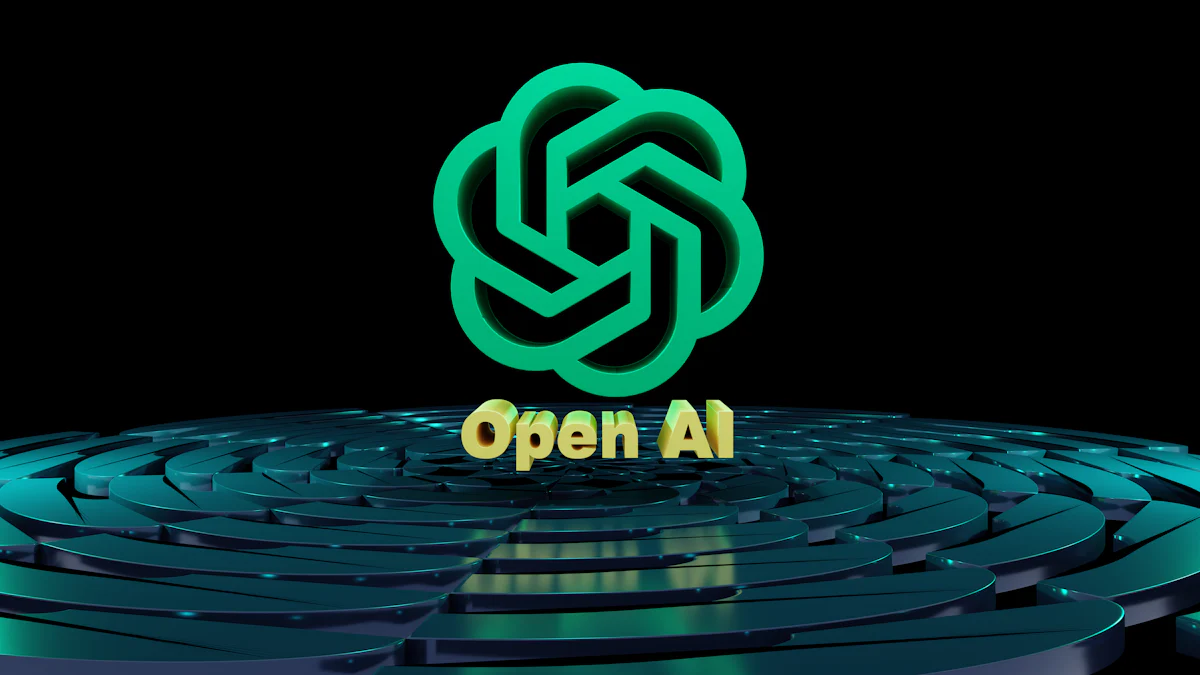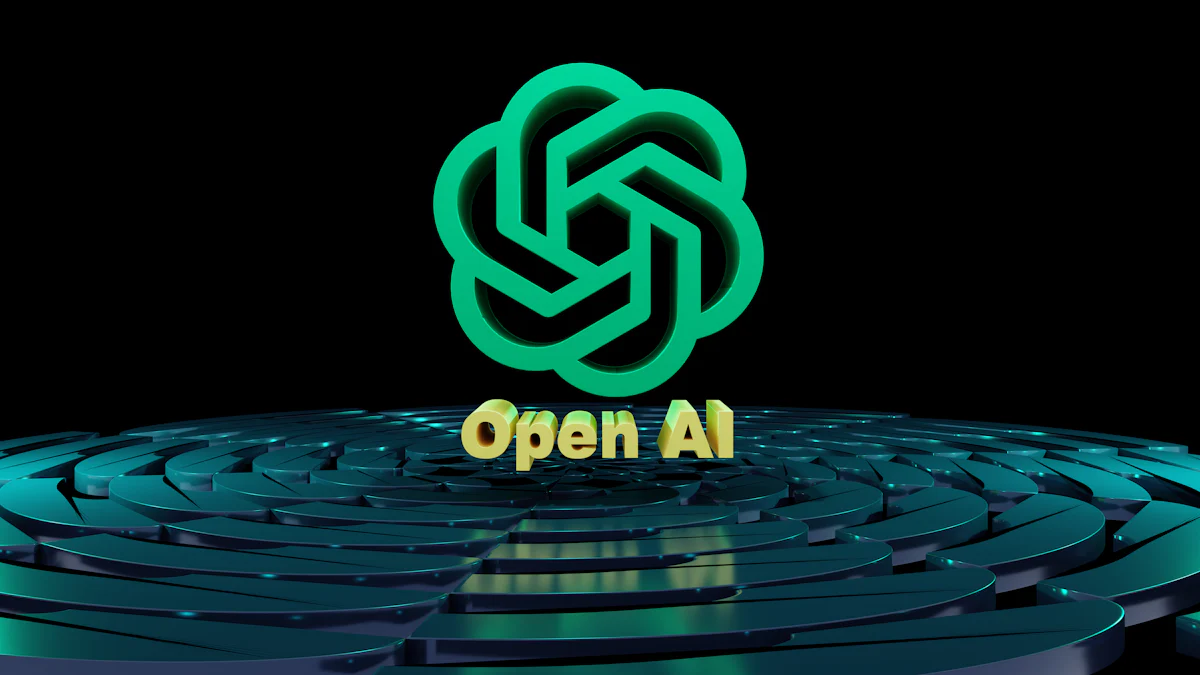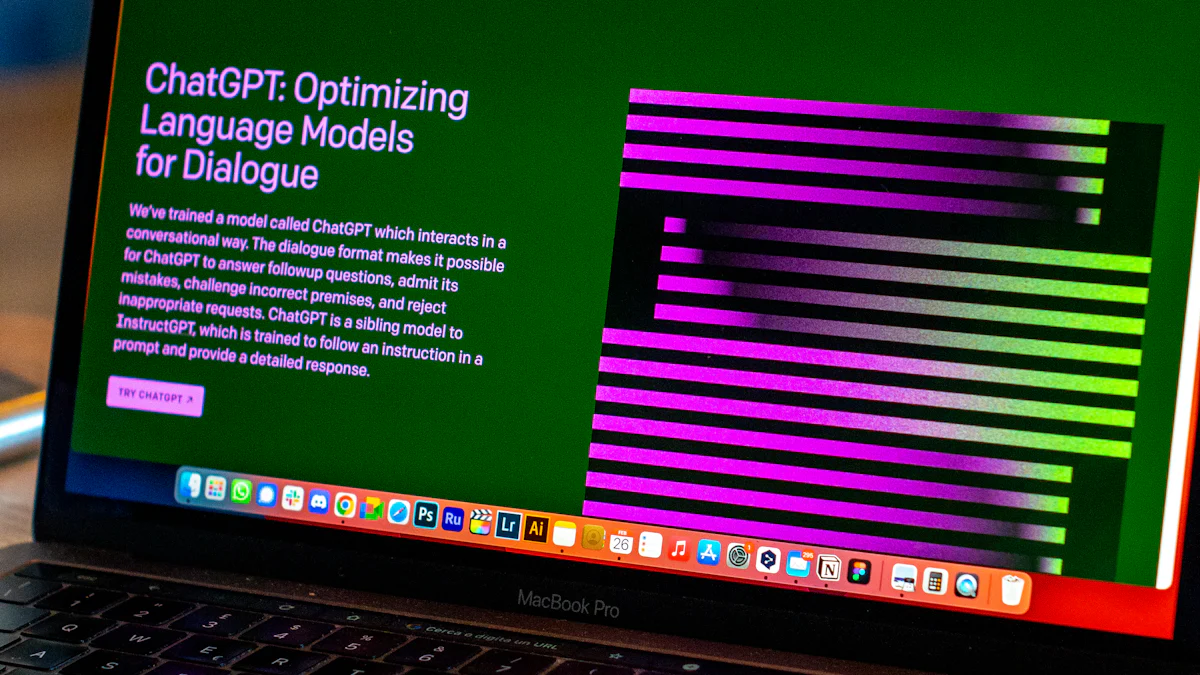GPTs vs. Assistants: What's the difference?

Artificial Intelligence (AI) has become a cornerstone of innovation, reshaping industries and altering daily lives. Over 73% of U.S. companies use AI in some aspect of their business. Understanding different types of AI technologies is crucial for leveraging their potential. Two prominent AI technologies include Generative Pre-trained Transformers (GPTs) and Assistants. Each offers unique capabilities and applications, making it essential to understand GPTs vs. Assistants.
Understanding GPTs

Definition and Origin
What are GPTs?
Generative Pre-trained Transformers (GPTs) represent a class of AI models designed for natural language processing. OpenAI developed GPTs to understand and generate human-like text. These models leverage deep learning techniques to process and produce coherent text based on input data.
Historical development and key versions
The journey of GPTs began with the introduction of GPT-1 in 2018. This marked a significant step forward in AI capabilities. GPT-1 laid the foundation for subsequent versions by demonstrating the potential of pre-training on large text corpora.
In 2020, OpenAI unveiled GPT-3, which became the cutting edge of natural language processing. With 175 billion parameters, GPT-3 showcased unprecedented language understanding and generation abilities. Each iteration from GPT-1 to GPT-4 has marked significant technological leaps, profoundly impacting the AI landscape.
Core Features
Natural language processing capabilities
GPTs excel in natural language processing (NLP). These models can understand context, syntax, and semantics, enabling them to generate human-like responses. The ability to process and generate text makes GPTs versatile tools for various applications.
Training on large datasets
GPTs undergo training on vast datasets containing diverse text sources. This extensive training allows the models to learn patterns, structures, and nuances of human language. The large-scale training equips GPTs with the ability to handle a wide range of topics and queries.
Practical Applications
Content generation
GPTs play a crucial role in content generation. Businesses use GPTs to create articles, blog posts, and marketing copy. The models can generate high-quality content quickly, saving time and resources.
Language translation
GPTs also contribute to language translation. These models can translate text between multiple languages, facilitating communication across linguistic barriers. The accuracy and fluency of translations make GPTs valuable tools for global interactions.
Chatbots and conversational agents
Chatbots and conversational agents benefit significantly from GPTs. These models enable chatbots to engage in meaningful and coherent conversations with users. The ability to understand and respond to user queries enhances customer support and user experience.
Understanding Assistants
Definition and Origin
What are AI Assistants?
AI Assistants represent a class of artificial intelligence designed to perform specific tasks. These assistants leverage natural language processing to understand user commands. AI Assistants execute tasks such as setting reminders, providing information, and controlling smart devices. Companies like Apple, Google, and Amazon have developed popular AI Assistants.
Evolution of virtual assistants
Virtual assistants have evolved significantly since their inception. Early versions in the 1960s functioned as simple chatbots with basic text-based prompts. The first modern digital virtual assistant, Siri, appeared on the iPhone 4S in 2011. Siri marked a turning point by integrating voice recognition and contextual understanding. Today’s virtual assistants can comprehend context, intent, and even emotion, making interactions more natural and efficient.
Core Features
Task-specific functionalities
AI Assistants excel in performing task-specific functionalities. These assistants can manage schedules, send messages, and provide weather updates. The ability to handle specific tasks efficiently makes AI Assistants valuable tools for personal and professional use.
Integration with devices and services
AI Assistants integrate seamlessly with various devices and services. Users can control smart home devices, access online services, and interact with other applications through voice commands. This integration enhances the convenience and functionality of AI Assistants in daily life.
Practical Applications
Personal assistance (e.g., scheduling, reminders)
AI Assistants provide valuable personal assistance. Users can set reminders, schedule appointments, and manage tasks effortlessly. This functionality helps individuals stay organized and productive.
Customer support
Businesses utilize AI Assistants for customer support. These assistants handle inquiries, provide information, and resolve issues quickly. The efficiency of AI Assistants improves customer satisfaction and reduces response times.
Smart home control
AI Assistants play a crucial role in smart home control. Users can operate lights, thermostats, and security systems using voice commands. This capability offers convenience and enhances the user experience in smart homes.
GPTs vs. Assistants: Comparative Analysis

Functional Differences
General-purpose vs. task-specific
Generative Pre-trained Transformers (GPTs) serve as general-purpose AI models. These models excel in a wide range of applications, such as content generation and language translation. GPTs can adapt to various contexts, making them versatile tools for different industries.
AI Assistants, on the other hand, focus on task-specific functionalities. These assistants perform predefined tasks like setting reminders and controlling smart home devices. The design of AI Assistants aims to handle specific user commands efficiently.
Flexibility and adaptability
GPTs offer high flexibility and adaptability. These models can generate human-like text based on diverse input data. Users without coding expertise can deploy GPTs quickly for various functions. The ability to understand context and semantics enables GPTs to provide coherent responses across multiple domains.
AI Assistants require a code-driven approach for integration. Developers can tailor AI Assistants to execute specific tasks within applications. The Assistant API provides a higher degree of customization, allowing developers to meet unique user needs. This makes AI Assistants ideal for businesses with technical resources.
Performance and Efficiency
Response accuracy
GPTs demonstrate impressive response accuracy. The extensive training on large datasets equips these models with the ability to understand and generate precise text. GPTs can handle complex queries and provide accurate answers, enhancing user experience.
AI Assistants also deliver reliable response accuracy. These assistants leverage natural language processing to interpret user commands accurately. The task-specific design ensures that AI Assistants perform their functions with high precision.
Speed and resource usage
GPTs require significant computational resources. The large-scale training and deep learning techniques demand substantial processing power. Despite this, GPTs can generate responses quickly, making them efficient for real-time applications.
AI Assistants, in contrast, utilize fewer resources. The focus on task-specific functionalities reduces the computational load. This efficiency allows AI Assistants to operate seamlessly on various devices, including smartphones and smart home systems.
User Experience
Interaction styles
GPTs engage users through text-based interactions. These models can participate in meaningful conversations, providing detailed and context-aware responses. The ability to understand natural language makes GPTs suitable for chatbots and conversational agents.
AI Assistants primarily use voice commands for interaction. Users can control devices and access information through spoken instructions. The voice recognition capabilities of AI Assistants enhance the convenience and accessibility of user interactions.
Ease of use
GPTs offer ease of use for a broad audience. Users without technical skills can deploy GPTs for various applications. The general-purpose nature of GPTs simplifies the process of integrating AI into different workflows.
AI Assistants require some level of technical expertise for setup and integration. Developers need to code specific functionalities to tailor AI Assistants to user needs. However, once integrated, AI Assistants provide a seamless and intuitive user experience.
Benefits and Limitations
Benefits of GPTs
Versatility in applications
GPTs offer remarkable versatility across various applications. These models can generate content, translate languages, and engage in conversations. Businesses leverage GPTs for marketing, customer service, and content creation. The adaptability of GPTs makes them valuable tools in multiple industries.
High-quality content generation
GPTs excel in producing high-quality content. These models understand context, syntax, and semantics. This capability allows GPTs to generate coherent and engaging text. Companies use GPTs to create articles, blog posts, and social media content. The efficiency of GPTs saves time and resources while maintaining content quality.
Limitations of GPTs
Computational resource requirements
GPTs demand significant computational resources. Training these models requires substantial processing power. The need for large-scale datasets and deep learning techniques increases resource consumption. This requirement can limit the accessibility of GPTs for smaller organizations.
Potential for generating misleading information
GPTs may generate misleading or inaccurate information. The models rely on patterns in the training data. Inaccurate or biased data can lead to incorrect outputs. Researchers warn about the impact on scholarly methods. Frequent use of GPTs without verification can affect evidence-based research.
Benefits of Assistants
Task efficiency
AI Assistants excel in task efficiency. These assistants perform specific functions like setting reminders and controlling devices. The focus on predefined tasks ensures quick and accurate execution. Users benefit from streamlined daily activities and improved productivity.
Seamless integration with daily activities
AI Assistants integrate seamlessly into daily routines. These assistants connect with various devices and services. Users can control smart home systems, access information, and manage schedules. The convenience of AI Assistants enhances the user experience in personal and professional settings.
Limitations of Assistants
Limited to predefined tasks
AI Assistants excel in performing specific tasks. However, these assistants face limitations due to their design. AI Assistants can only execute predefined commands. Users cannot expect AI Assistants to handle tasks outside their programmed capabilities. This restriction limits the flexibility of AI Assistants. Businesses and individuals may find this constraint challenging when seeking more versatile solutions.
Dependency on specific platforms
AI Assistants often depend on specific platforms for optimal functionality. For example, Siri operates within the Apple ecosystem. Google Assistant integrates seamlessly with Google services. This dependency creates a barrier for users who utilize multiple platforms. The need for platform-specific integration can complicate the user experience. Developers must invest time and resources to ensure compatibility across different systems.
Expert Testimony:
"Since these GPTs allow researchers to use unstructured statements and sentences as a search term (instead of leveraging structured keywords or the Medical Subject Headings thesaurus, for example), they enable indolent researchers to cite publications based on their hunches without any understanding of the literature, or even without reading an article’s abstract. Consequently, frequent and unfettered use of these GPTs may permanently impact the scholarly method, impacting the ability to identify and access evidenced-based research and advance discovery through rigorous inquiry."
This quote highlights the importance of understanding the limitations of AI technologies. While GPTs offer flexibility, AI Assistants remain confined to specific tasks and platforms. Users must consider these limitations when choosing the appropriate AI technology for their needs.
Recommendations and Considerations
Choosing the Right Technology
Based on user needs
Selecting the appropriate AI technology depends on specific user needs. Generative Pre-trained Transformers (GPTs) offer versatility for various applications. Businesses seeking content generation, language translation, or chatbot functionalities should consider GPTs. These models provide high-quality text generation and adaptability across multiple domains.
AI Assistants excel in task-specific functionalities. Users requiring personal assistance, such as scheduling and reminders, will benefit from AI Assistants. These assistants integrate seamlessly with devices and services, enhancing daily activities. For businesses, AI Assistants improve customer support and smart home control.
Based on application context
The application context plays a crucial role in choosing between GPTs and AI Assistants. GPTs suit scenarios requiring extensive natural language processing capabilities. Industries like marketing, customer service, and content creation can leverage GPTs for efficient operations. The ability to handle diverse topics and queries makes GPTs valuable in dynamic environments.
AI Assistants fit well in contexts demanding precise task execution. Personal use cases, such as managing schedules and controlling smart devices, benefit from AI Assistants. Businesses focusing on customer interactions and support find AI Assistants effective. The task-specific design ensures quick and accurate responses, enhancing user satisfaction.
Future Trends
Advancements in GPTs
The future of GPTs promises significant advancements. Researchers continue to enhance the capabilities of these models. Future versions will likely feature improved natural language understanding and generation. The integration of multimodal data, such as text and images, will expand GPTs' applications.
Businesses can expect more efficient and accurate content generation. The ability to handle complex queries and provide detailed responses will improve. GPTs will play a vital role in industries requiring advanced language processing. Continuous improvements will make these models indispensable tools for various sectors.
Evolution of Assistants
AI Assistants will undergo substantial evolution. Developers aim to enhance the functionality and reliability of these assistants. Future AI Assistants will likely detect and respond to emotional cues in voice or text. This capability will make interactions more natural and intuitive.
Expert Testimony:
Walter Shields, a specialist in virtual assistants, notes, "Voice assistants are handicapped by their limited functionality, which hinders their usefulness. Aside from the basic commands, most virtual assistants struggle with advanced functionalities."
The integration of advanced natural language processing will improve conversational abilities. AI Assistants will better understand context and nuances in user interactions. This evolution will address current limitations and expand the range of tasks AI Assistants can perform.
In conclusion, selecting the right AI technology requires careful consideration of user needs and application context. The future holds promising advancements for both GPTs and AI Assistants, enhancing their capabilities and expanding their applications.
Understanding the key differences between GPTs and Assistants is crucial. GPTs offer versatility and high-quality content generation, while Assistants excel in task-specific functionalities and seamless integration with daily activities. Selecting the right AI technology depends on user needs and application context. Staying informed about advancements in AI can help users leverage these technologies effectively. The future holds promising developments for both GPTs and Assistants, enhancing their capabilities and expanding their applications across various industries.
See Also
Battle of ChatGPT and Watson Assistant: AI Showdown in 2024
Complete 2024 Manual: Training ChatGPT Using Personal Data
Boosting Assistance: Personalized ChatGPT for Helpdesk Automation
Revolutionizing Sites with GPT-4 and Pinecone: Unleashing AI Assistant Features
Improving Social Media Analytics with Personalized ChatGPT and RTS Intercom Solutions

